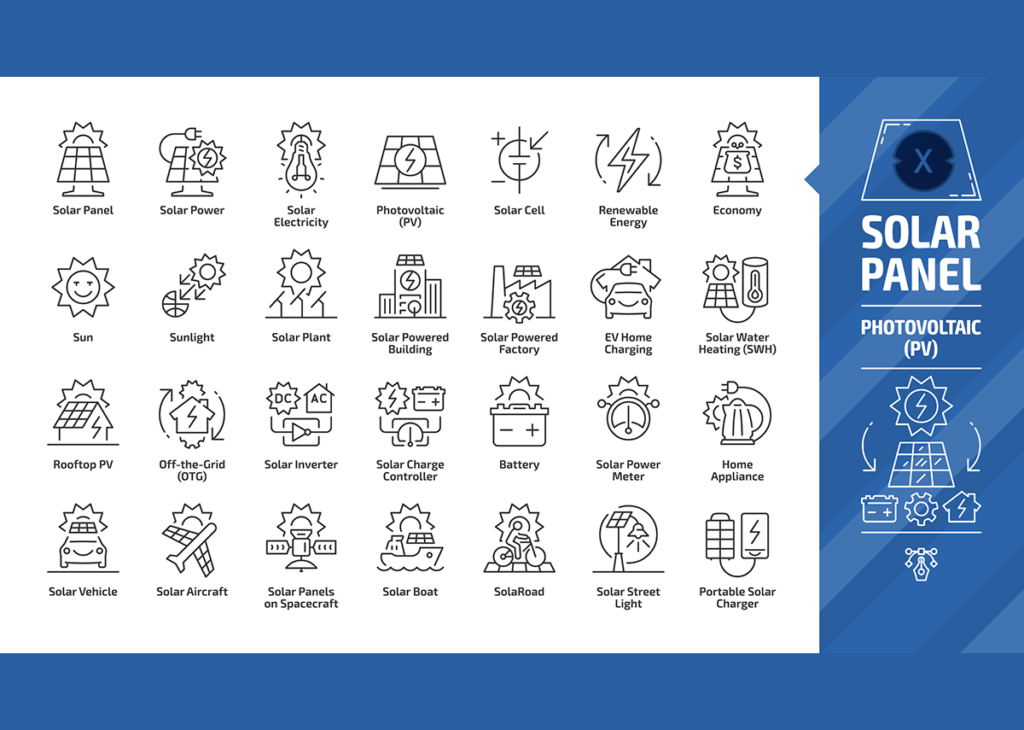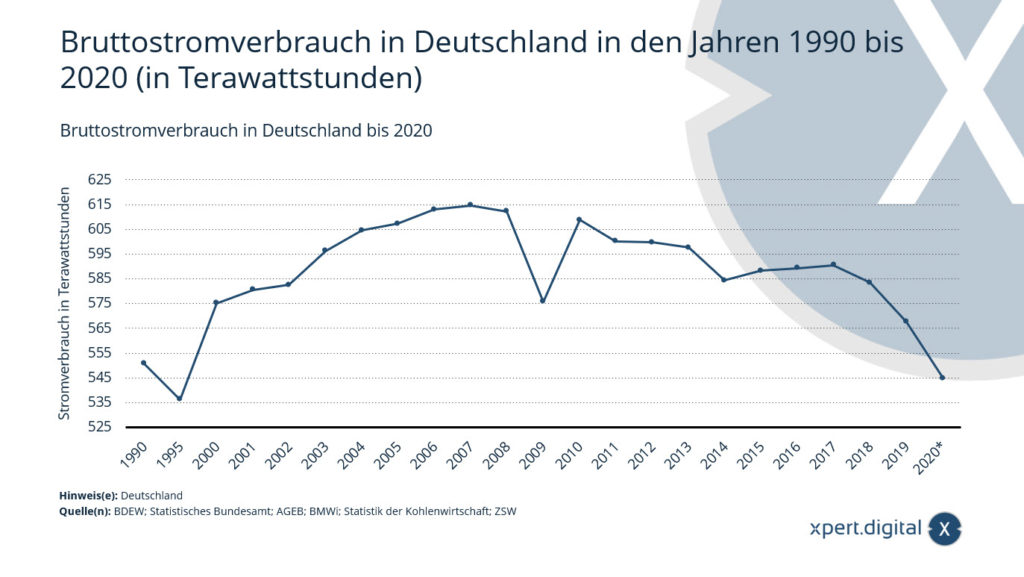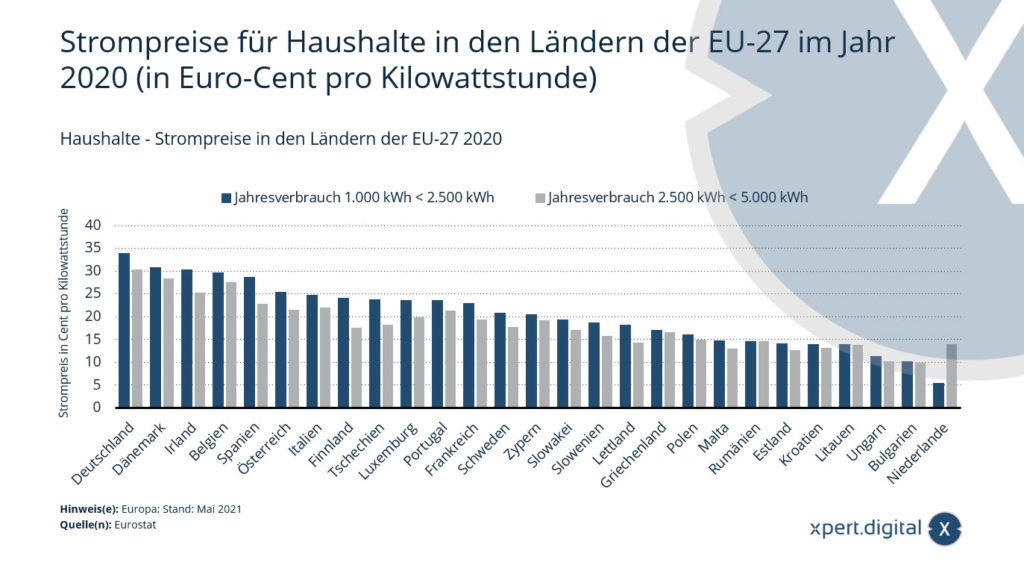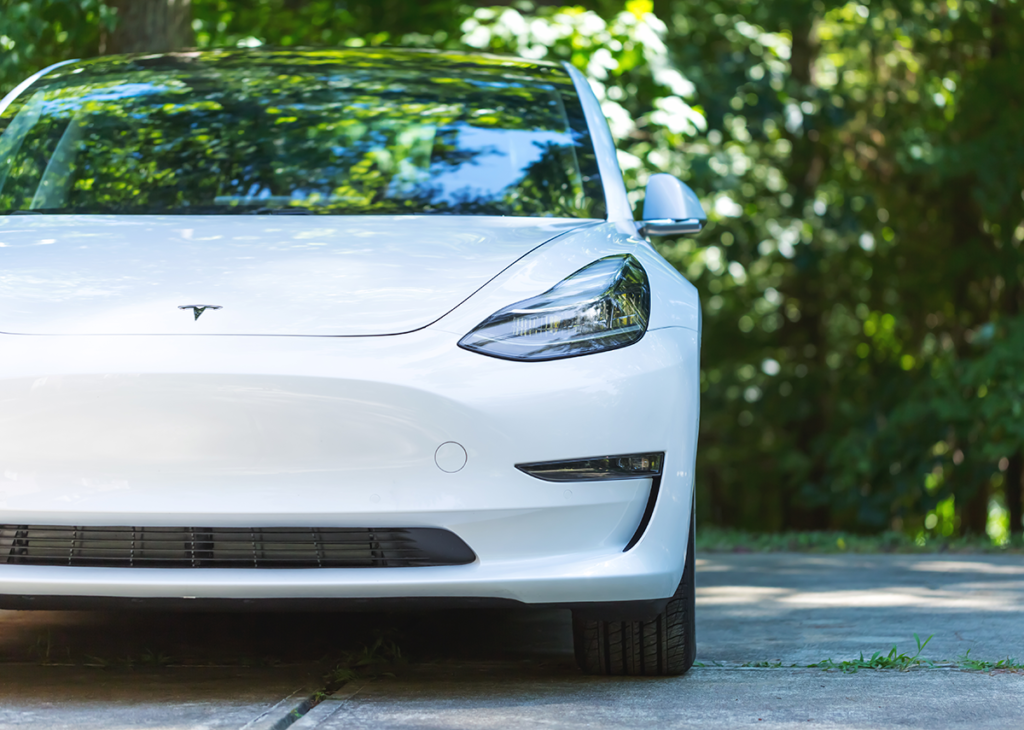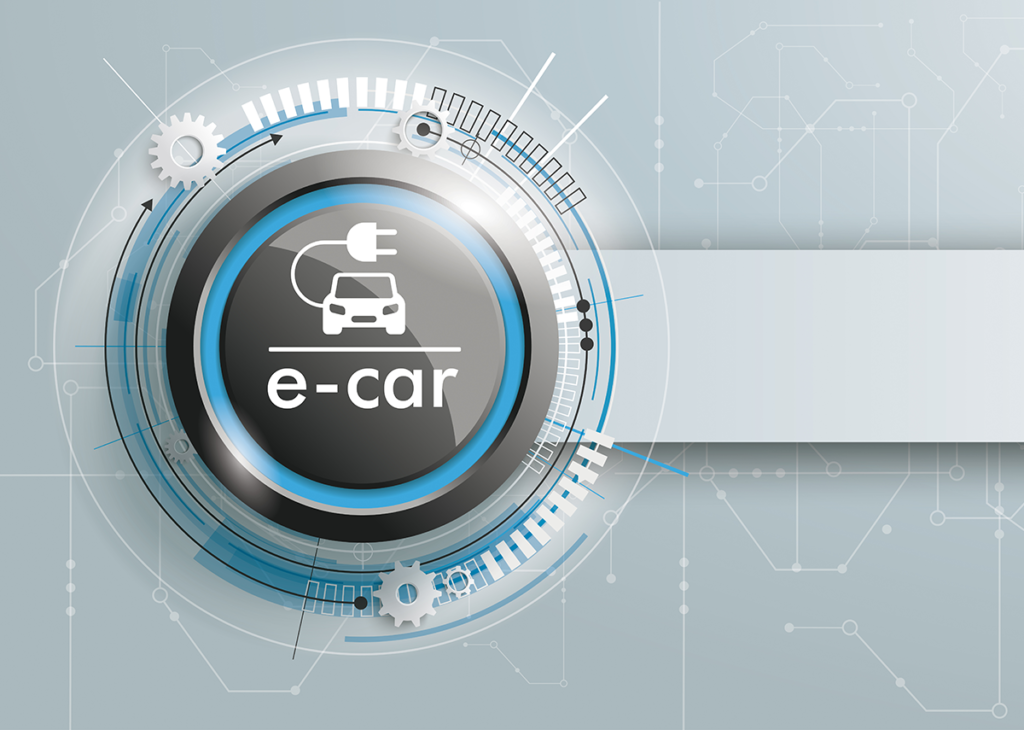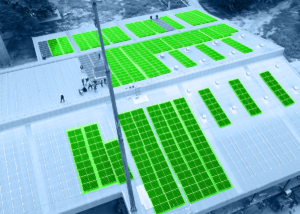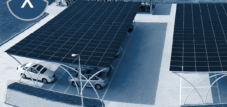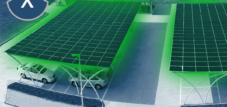Looking for a solar parking space: plan a solar car park or build a system in Dormagen, Grevenbroich, Herten or Bergheim?
Published on: October 20, 2021 / Update from: October 20, 2021 - Author: Konrad Wolfenstein
Expand photovoltaic potential with solar carports
The demand for solar carports is increasing. Without a doubt, the solar obligation also plays an important role in some federal states. Solar energy hasn't just been a topic since yesterday, but it is increasingly coming into focus thanks to the climate-neutral, zero-emission CO2 policy of the EU and the federal government. Until recently, solar carports were not part of the standard or were not thoroughly considered alongside solar systems on the roof or large ground-mounted photovoltaic systems. There have been a few large solar carport projects here and there, but not many have yet dared to implement them.
The solar roofs of open parking spaces play a central role with regard to electromobility. The government's planned switch from the currently 48 million registered cars to electric vehicles must be completed within the next 10 to 15 years. This is not possible without expanding the necessary infrastructure. The solar carports are intended to help here, in combination with charging stations and electricity storage.
The business model for parking space owners is particularly interesting. Be it company parking spaces or parking spaces at discount stores. With the expansion of covered solar systems and simultaneous charging options, smaller companies also have the opportunity to compete and earn money by refueling or charging compared to the large energy companies with their filling station networks.
But private households also have the opportunity to become less dependent on rising fuel and charging prices by generating their own energy for transportation.
Our solar carport solutions for covering open parking areas are modular and scalable:
- Quick and easy assembly
- Individually customizable design (color, materials, surface, size, etc.)
- Installation of charging stations and inverters is possible at any time
- Scalable & modular: Available as a single, double or arbitrarily scalable row carport
- Even the standard version can be used for very high wind and snow loads
- ... and much more
📣 Open parking areas Photovoltaic solutions for industry, retail and municipalities
Everything from a single source, specially designed for solar solutions for large parking areas. You refinance or counterfinance into the future with your own electricity generation.
🎯 For solar engineers, plumbers, electricians and roofers
Advice and planning including a non-binding cost estimate. We bring you together with strong photovoltaic partners.
👨🏻 👩🏻 👴🏻 👵🏻 For private households
We are positioned across regions in German-speaking countries. We have reliable partners who advise you and implement your wishes.
With over 1,000 specialist articles, we cannot present all topics here. Therefore, you will find a small excerpt from our work here and we would be pleased if we have piqued your interest in getting to know us better:
Our solar PDF library
Large PDF library: Market monitoring and market intelligence on the subject of photovoltaics.
Data is viewed at regular intervals and checked for relevance. This usually brings together some interesting information and documentation, which we combine into a PDF presentation: our own data analyzes and marketing intelligence as well as external market observations.
More about it here:
Per capita electricity consumption in Germany until 2018
Per capita electricity consumption in Germany was around 7.2 megawatt hours of electricity in 2018. In 1995 the value was 6.7 megawatt hours. A total of 599 terawatt hours of electricity were consumed across Germany in 2018.
Electricity consumption of private households
Industry is responsible for almost half of the electricity consumed in Germany. Around a quarter are distributed between the consumer groups “commercial, retail and services” and “households”. Electricity prices for household customers in Germany have been rising continuously since 2007. In a comparison of the EU-28 countries, electricity prices for households are highest in Germany, followed by Denmark and Belgium. In Bulgaria and the Netherlands, however, household electricity prices are cheapest.
Worldwide electricity consumption
Global electricity consumption has been increasing for almost 40 years. Most electricity is consumed in China, followed by the USA and India. Germany is ranked 7th among the countries with the highest electricity consumption in the world. China is also the country with the highest share of global renewable energy consumption. After the USA, Germany follows in third place.
Per capita electricity consumption in Germany from 1995 to 2018 (in kilowatt hours)
- 1995 – 6,661 kilowatt hours
- 1996 – 6,719 kilowatt hours
- 1997 – 6,747 kilowatt hours
- 1998 – 6,834 kilowatt hours
- 1999 – 6,845 kilowatt hours
- 2000 – 7,116 kilowatt hours
- 2001 – 7,178 kilowatt hours
- 2002 – 7,200 kilowatt hours
- 2003 – 7,372 kilowatt hours
- 2004 – 7,498 kilowatt hours
- 2005 – 7,558 kilowatt hours
- 2006 – 7,644 kilowatt hours
- 2007 – 7,683 kilowatt hours
- 2008 – 7,665 kilowatt hours
- 2009 – 7,233 kilowatt hours
- 2010 – 7,670 kilowatt hours
- 2011 – 7,552 kilowatt hours
- 2012 – 7,533 kilowatt hours
- 2013 – 7,491 kilowatt hours
- 2014 – 7,293 kilowatt hours
- 2015 – 7,257 kilowatt hours
- 2016 – 7,234 kilowatt hours
- 2017 – 7,231 kilowatt hours
- 2018 – 7,176 kilowatt hours
Gross electricity consumption in Germany
Gross electricity consumption in Germany was around 545 terawatt hours in 2020. This means that consumption during the Corona pandemic was below the level of 1990. Gross electricity consumption refers to the electrical work used by the consumer before deducting the power plants' own needs and transmission or network losses.
Electricity consumption worldwide
More and more electricity is being consumed worldwide. In 1980 it was 7,300 terawatt hours, but today global consumption is around three times as high. The industrial sector accounts for the largest share. This is followed by private households as well as the commercial and public sectors. Transport accounts for a relatively small share of global electricity consumption.
Power supply in Germany
The number of companies in the electricity supply sector in Germany has been increasing since 1980. At the same time, however, fewer and fewer people are working in the electricity supply sector in this country. The difference between electricity imports and exports to and from Germany is also increasing over the years. Nowadays, significantly more electricity is exported than is imported into Germany.
Gross electricity consumption in Germany from 1990 to 2020 (in terawatt hours)
- 1990 – 550.7 terawatt hours
- 1995 – 536.2 terawatt hours
- 2000 – 575.1 terawatt hours
- 2001 – 580.6 terawatt hours
- 2002 – 582.6 terawatt hours
- 2003 – 596.2 terawatt hours
- 2004 – 604.5 terawatt hours
- 2005 – 607.3 terawatt hours
- 2006 – 613 terawatt hours
- 2007 – 614.6 terawatt hours
- 2008 – 612.2 terawatt hours
- 2009 – 575.7 terawatt hours
- 2010 – 608.8 terawatt hours
- 2011 – 600.2 terawatt hours
- 2012 – 599.7 terawatt hours
- 2013 – 597.7 terawatt hours
- 2014 – 584.3 terawatt hours
- 2015 – 588.3 terawatt hours
- 2016 – 589.3 terawatt hours
- 2017 – 590.5 terawatt hours
- 2018 – 583.4 terawatt hours
- 2019 – 567.6 terawatt hours
- 2020 – 544.9 terawatt hours
Households - electricity prices in EU countries
The statistics show the electricity prices for household customers in the EU-27 countries in 2020. The electricity price for private households in Denmark in 2020 was around 28.26 cents per kilowatt hour with an annual consumption of 2,500 to 5,000 kilowatt hours.
Electricity prices* for households in the EU-27 countries in 2020 (in euro cents per kilowatt hour)
As of: May 2021. Including all taxes. The key figures are annual averages.
Annual consumption 1,000 kWh < 2,500 kWh
- Germany – 33.87 cents
- Denmark – 30.80 cents
- Ireland – 30.22 cents
- Belgium – 29.68 cents
- Spain – 28.64 cents
- Austria – 25.39 cents
- Italy – 24.69 cents
- Finland – 24.05 cents
- Czech Republic – 23.74 cents
- Luxembourg – 23.57 cents
- Portugal – 23.53 cents
- France – 22.84 cents
- Sweden – 20.77 cents
- Cyprus – 20.42 cents
- Slovakia – 19.29 cents
- Slovenia – 18.71 cents
- Latvia – 18.14 cents
- Greece – 17.02 cents
- Poland – 16.08 cents
- Malta – 14.75 cents
- Romania – 14.60 cents
- Estonia – 14 cents
- Croatia – 13.98 cents
- Lithuania – 13.97 cents
- Hungary – 11.29 cents
- Bulgaria – 10.19 cents
- Netherlands – 5.45 cents
Annual consumption 2,500 kWh < 5,000 kWh
- Germany – 30.25 cents
- Denmark – 28.26 cents
- Ireland – 25.15 cents
- Belgium – 27.47 cents
- Spain – 22.69 cents
- Austria – 21.39 cents
- Italy – 21.90 cents
- Finland – 17.57 cents
- Czech Republic – 18.18 cents
- Luxembourg – 19.86 cents
- Portugal – 21.27 cents
- France – 19.26 cents
- Sweden – 17.72 cents
- Cyprus – 19.16 cents
- Slovakia – 17.05 cents
- Slovenia – 15.71 cents
- Latvia – 14.26 cents
- Greece – 16.58 cents
- Poland – 14.93 cents
- Malta – 12.91 cents
- Romania – 14.54 cents
- Estonia – 12.64 cents
- Croatia – 13.04 cents
- Lithuania – 13.74 cents
- Hungary – 10.20 cents
- Bulgaria – 9.90 cents
- Netherlands – 13.94 cents
Electricity - German export by country
The statistics show German electricity exports by country in 2020. In 2020, the physical flow of electricity from Germany into the Polish grid was around 11.3 billion kilowatt hours.
German electricity exports by country in 2020* (in terawatt hours)
- Austria – 15.20 terawatt hour
- Switzerland – 12.18 terawatt hours
- Poland – 11.32 terawatt hours
- Czech Republic – 9.27 terawatt hours
- Netherlands – 9.13 terawatt hours
- Luxembourg – 5.08 terawatt hours
- Denmark – 3.45 terawatt hours
- France – 2.94 terawatt hours
- Sweden – 0.58 terawatt hours
Photovoltaics: solar heating with renewable energy
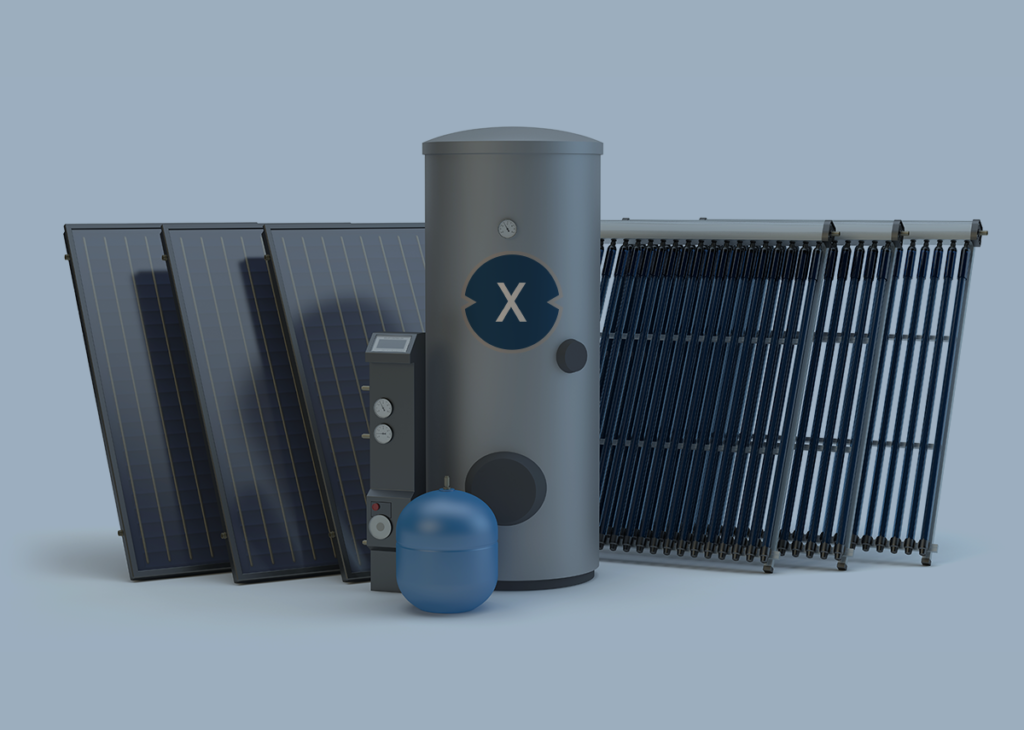
Heating with renewable energy? With photovoltaics? – Image: Xpert.Digital & Studio Harmony|Shutterstock.com
Over two thirds of the residential buildings built in 2020 are heated with renewable energies - A good two thirds (68.8%) of the newly built residential buildings in Germany in 2020 will be wholly or partially heated with renewable energies. As the Federal Statistical Office (Destatis) reports, this proportion increased slightly again compared to 2019 (67.2%). In 2015 it was 61.5%. As the primary energy source, i.e. used predominantly for heating, renewable energies were used for the first time in more than half (50.5%) of the total 112,935 new residential buildings in 2020 (2015: 38.0%).
Renewable energies for heating include heat pumps (geothermal energy or environmental thermal energy), solar thermal energy, wood, biogas/biomethane and other biomass. Conventional energy sources include oil, gas and electricity. District heating is another energy source that is not counted as a renewable or conventional energy source in statistics.
More about it here:
Is waste incineration renewable energy?
Non-renewable energy can only be used once. It is limited and not available at will. This also includes nuclear power. Nuclear power plants require enriched uranium, which must first be produced industrially. Depleted uranium is produced as a waste product. What happens to this and to the fission products caused by nuclear fission, i.e. highly toxic radioactive waste, is a different topic. On the other hand, fossil fuels cause environmental pollution and global warming by releasing greenhouse gases.
Until then, everything is logically understandable: renewable energy is freely available and does not harm the environment.
More about it here:
The most popular electric car in the world
E-cars are becoming increasingly popular among German drivers. In absolute numbers, petrol and diesel vehicles continue to lead. However, registrations for both drive types fell noticeably this year, as this graphic shows. One reason for the development is likely to be the purchase bonuses that are currently being granted by the federal government and manufacturers. According to a forecast, the share of internal combustion engines in the total production of automobile drives is expected to decrease significantly by 2030. In the year mentioned, only five percent of the automobiles produced will have a diesel engine and 47 percent of the automobiles will have a gasoline engine.
More about it here:
What is the demand for electric cars?
Around one in five cars that rolled off the assembly line in Germany last March was an electric car. As the graphic based on data from the Association of the Automotive Industry (VDA) shows, the share of electric cars in production volume has recently increased significantly. In March 2019 it was only 3.3 percent with around 15,000 electric cars. The graphic also shows that car production in Germany has recovered significantly overall after the slump in 2020. However, in March 2021 it is still around 16 percent below the total production volume in March 2019.
More about it here:
- Warehouses, production halls and industrial halls with their own power source from a photovoltaic roof system - Image: NavinTar|Shutterstock.com
- Industrial plant with its own power source from an outdoor photovoltaic system - Image: Peteri|Shutterstock.com
- Plan solar systems with photovoltaic solutions for freight forwarding and contract logistics
- B2B solar systems and photovoltaic solutions & advice
- Plan photovoltaics for warehouses, commercial halls and industrial halls
- Industrial plant: Plan a photovoltaic open-air system or open-space system
- Plan solar systems with photovoltaic solutions for freight forwarding and contract logistics
- B2B solar systems and photovoltaic solutions & advice
Photovoltaic system solutions: Xpert.Solar for planning and consulting in the area of solar carports, solar systems on roofs and photovoltaic systems in general for Dormagen, Grevenbroich, Herten and Bergheim
I would be happy to serve as your personal advisor.
You can contact me by filling out the contact form below or simply call me on +49 89 89 674 804 .
I'm looking forward to our joint project.
Xpert.Digital – Konrad Wolfenstein
Xpert.Digital is a hub for industry with a focus on digitalization, mechanical engineering, logistics/intralogistics and photovoltaics.
With our 360° business development solution, we support well-known companies from new business to after sales.
Market intelligence, smarketing, marketing automation, content development, PR, mail campaigns, personalized social media and lead nurturing are part of our digital tools.
You can find out more at: www.xpert.digital – www.xpert.solar – www.xpert.plus




